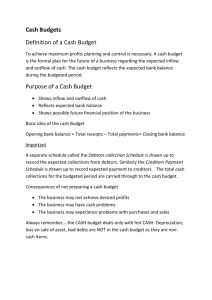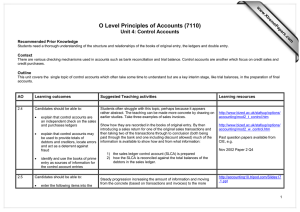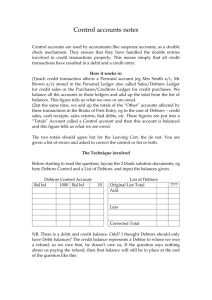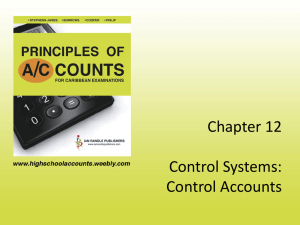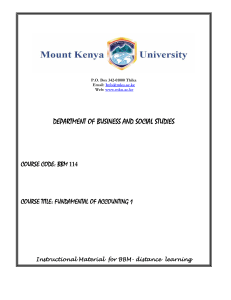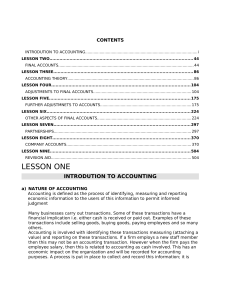Chapter 13 Single Entry: Incomplete Records
advertisement
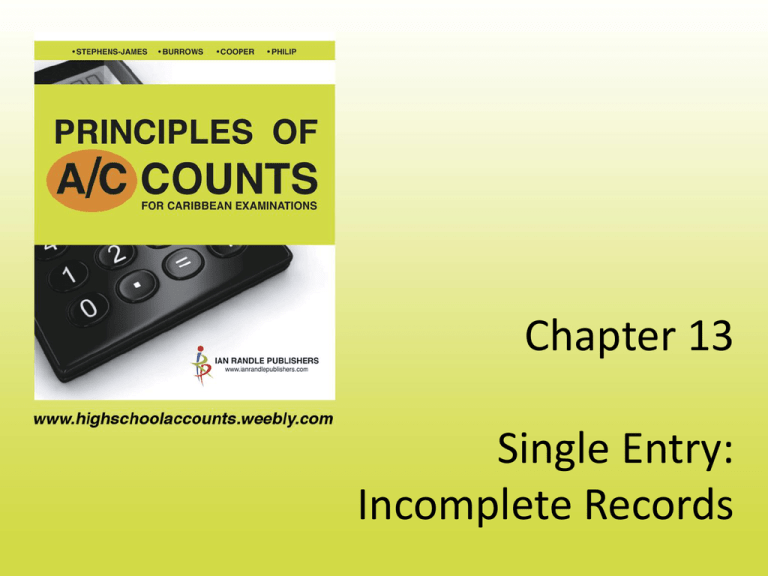
Chapter 13 Single Entry: Incomplete Records Introduction • Incomplete records are normally prepared by businesses which lack professional management or businesses whose accounting records have been destroyed during the period. All the records that these businesses may have are: 1. Balance of assets and liability accounts at the start and end of an accounting period. 2. Information on cash spent and received during an accounting period. Net profit from assets and liability account balances The change in the capital balance of a business from the start of an accounting period to the end is due to: Additional capital invested by owner during the period Net profit or loss for the period; and Drawings taken. Net profit from assets and liability account balances Capital (total assets less liabilities) at start of period add Capital introduced during the period add Net profit (loss) less Drawings = Capital (total assets less liabilities) at end of period X X X (X X NB Capital at close add drawing less capital at start less capital introduced = Net profit (loss) Preparing the Income Statement The format is the same as in business which use full double entry. However, instead of using a Trial Balance, a cash book (amounts received and spent) and asset and liability balances at the start and end of an accounting period are used in single entry businesses Interpreting the Cash book Item Receipts from sales/income Receipts from loans Receipts from debtors Payments for expenses Payments for assets Payment to creditors dr dr dr cr cr cr Side Preparing the Income Statement Once opening and closing balances for trade debtors are given, a debtors/sales ledger control accounts must be prepared to calculated credit sales. The value for credit sales must be added to cash sales if any and used in the Income Statement. Note that cash sales are not the same as receipts from debtors. Preparing the Income Statement Sales/debtors ledger control account Bal b/d (debtors balance at start) x Bal b/d (debtors overpaid at start) x Credit sales (balancing figure) x Cash/Bank (receipts from customers) x cash/bank (refunds to customers) x Cash discounts allowed x NSF/ dishonoured cheques x Bad debts x Sales return/return inwards x Contra-entry (set off) x Bal c/d (debtors balance at close) x Bal c/d overpayment at close) x x x Preparing the Income Statement Once opening and closing balances for trade creditors are given, a creditors/purchases ledger control accounts must be prepared to calculated credit purchases. The value for credit purchases must be added to cash purchase if any and used in the Income Statement. Note that cash purchases are not the same as payments to creditors. Preparing the Income Statement Purchases/creditors ledger control account Bal b/d (overpayment balance at start) x Bal b/d (suppliers balance at start) x Cash/Bank (payments to creditors) x Credit purchases (balancing figure) x Cash discounts received x Cash/bank (refunds from suppliers) x Returns outwards/purchases returns x Contra-entry (set off) x Bal c/d (creditors at close) x Bal c/d (overpayment to credit at close) x x x Preparing the Income Statement Depreciation expense, a non cash expense, must be calculated by subtracting the fixed asset value at close from the value of the fixed asset at start. The reduction is depreciation expense. This must only be done if the rate of depreciation is not given in a question. Preparing the Income Statement Remember an expense under the accrual basis represents not the cash paid but the amount that must be paid for the accounting period. The account bellows shows how cash expense is to be adjusted if there are amount prepaid or owing. $ $ Prepaid b/d (start) x Owing b/d (start) x Cash/bank (expense paid) x P&L (balancing figure) x Owing c/d (close) x Prepaid c/d (close) x x x
